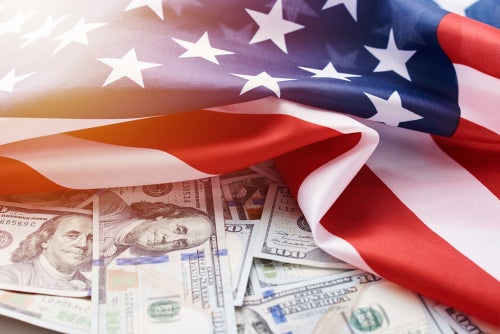
“The first half of the year is over, and the economy is still moving in the right direction,” said the NRF’s chief economist. “While its rhythm, tone and pattern have slowed, it has not stalled and recently revised data shows underlying strength that seems to be rolling forward.”
Revised data from the federal Bureau of Economic Analysis revealed first-quarter gross domestic product (GDP), adjusted for inflation, grew by 2% year over year, surpassing the initial estimate of 1.1%.
Additionally, the personal savings rate was upwardly revised to 4.3% from 3.4%, while private final sales to domestic purchasers, which exclude inventories and imports, demonstrated a growth rate of 3.2%, up from 2.9%.
Despite the positive outlook for the US economy, Kleinhenz acknowledged the likelihood of US economic headwinds affecting consumer spending in the coming months. However, he emphasised the strength of the US consumer, with $500bn in excess savings accumulated during the pandemic and there continuing to be employment growth.
He said: “Consumers are the path of least resistance to economic growth and are doing their part to keep the economy moving ahead.”
US consumer spending, which represents 70% of GDP, exhibited robust growth in the first quarter, expanding at an annual rate of 4.2%. This outpaced the 1% growth experienced in the fourth quarter of 2022 and marked the most rapid growth since mid-2021, despite challenges posed by interest rates and inflation.

US Tariffs are shifting - will you react or anticipate?
Don’t let policy changes catch you off guard. Stay proactive with real-time data and expert analysis.
By GlobalDataRecent data for May suggests a potential slowdown in US consumer spending when the second quarter results are released.
Unadjusted household spending increased by only 0.1% month over month, compared to 0.6% in April. This trend indicates a shift from goods, which experienced a decline of 0.5% in May, toward services, which saw a growth of 0.4%. Retail sales, excluding automobile dealers, gasoline stations, and restaurants, as defined by NRF, increased by 0.4% month over month in May, slightly below the 0.6% growth recorded in April.
Regarding monetary policy, the Federal Reserve’s Open Market Committee maintained interest rates unchanged last month, aiming to evaluate the impact of prior rate hikes. However, the majority of committee members expect two more rate increases in the coming months, with varying predictions ranging from one to four additional hikes. Only two of the 11 members anticipate that rates will remain unchanged.
Although inflation remains elevated, there are signs of a slowdown, alleviating some pressure on households. The Personal Consumption Expenditures Price Index, the Fed’s preferred inflation gauge, reported a year-over-year price increase of 3.8% in May, down from 4.3% in April.
This marks the first time inflation has fallen below 4% since early 2021. Despite this decline, sustained growth in consumer spending could prompt the Fed to raise interest rates further in an effort to achieve its inflation target of 2%.



